The AMD Ryzen 7 5700G, Ryzen 5 5600G, and Ryzen 3 5300G Review
by Dr. Ian Cutress on August 4, 2021 1:45 PM EST
Earlier this year, AMD launched its Zen 3 based desktop processor solutions with integrated graphics. Marketed as the Ryzen 5000G family, these processors are the latest offering to combine AMD’s high-performing Zen 3 cores with tried-and-tested Vega 8 graphics, all built on TSMC’s 7nm process. As desktop processors, AMD made them available to system builders for a few months, allowing the company to keep track of stock levels and have a consistent demand during a high-demand phase for silicon. But on August 5th, they will be made available to buy at retail, and we’ve got the most important models to test.
The AMD Ryzen 5000G APUs: Cezanne Silicon
AMD actually came to market with its Zen 3-based integrated graphics silicon back in December 2020. The Cezanne silicon, with eight Zen 3 cores and up to Vega 8 graphics, was first earmarked for laptop use. We saw it come to market in that fashion for the 15 W and 45 W segments, and tested it in the ASUS ROG Flow X13 laptop in a 35 W variation, paired with a discrete graphics card.
AMD Ryzen 9 5980HS Cezanne Review: Ryzen 5000 Mobile Tested
As a mobile chip in both low power and high power segments, it had to do duty as both a processor and graphics at 15 W, but mainly as a processor at 45 W powering a discrete graphics card. For the desktop processors, AMD cranks up the power even more to 65 W, where it is expected to perform either as a good CPU powering a GPU, or as an integrated graphics solution and do everything.
The Ryzen 5000G processor series is an upgrade over last year’s Ryzen 4000G processor series. AMD co-designed both of these processor families to re-use key parts of the chip design, enabling a fast time-to-market and quicker upgrade cycle for AMD’s partners (OEMs), like Dell, HP, Lenovo, and others. The biggest re-use between the two families is the graphics, which has Vega 8 graphics on both, and although there’s a hefty frequency bump for 5000G in mobile, the desktop parts actually see a decline. We expect AMD to have its latest RDNA 2 graphics in its G processors next time around, but for now it stays the same because that helps expedite the design for these processors.
 AMD CEO, Dr. Lisa Su, with Cezanne silicon
AMD CEO, Dr. Lisa Su, with Cezanne silicon
The major difference between the 4000G and 5000G processors is that the new hardware uses eight of AMD’s latest Zen 3 CPU cores, which is an upgrade over the eight Zen 2 cores from last year. The highlight is the +19% raw performance uplift when comparing the two at the same frequency. The second major difference is that the 4000G processors never technically came to retail (but we reviewed them anyway), while AMD is making the Ryzen 7 5700G and Ryzen 5 5600G as individual products that customers can buy.
Under the hood, there are a few more key changes that enthusiasts will be interested in. The 8-core Zen 3 design doubles the L3 cache per core, but also combines it into a single 16 MB L3 cache structure. This enables any of the eight cores to access the full cache, reducing latency to main memory (from 4 MB to 16 MB). The previous design had two clusters of four Zen 2 cores, so while it still had 8 cores, each cluster only had access to 4 MB of L3 cache. This is of sizable importance when it comes to workloads that sit in the 4 MB to 16 MB memory space, such as integrated graphics gaming and discrete graphics.
The new processor is 180 mm2 in size, compared to 156 mm2 of the last generation, but still fits into the same socket. It contains 10.7 billion transistors, which is up from 9.8 billion. This means an effective decrease in transistor density, although we know that Zen 3 cores are slightly larger than Zen 2 cores, and some additional security measures have been added.
There are six desktop processors in this family, and two of them are coming to store shelves.
| AMD Ryzen 5000G Series APUs | |||||||
| AnandTech | Core / Thread |
Base Freq |
Turbo Freq |
GPU CUs |
GPU Freq |
PCIe * |
TDP |
| Ryzen 5000G | |||||||
| Ryzen 7 5700G | 8 / 16 | 3800 | 4600 | 8 | 2000 | 16+4+4 | 65 W |
| Ryzen 7 5700GE | 8 / 16 | 3200 | 4600 | 8 | 2000 | 16+4+4 | 35 W |
| Ryzen 5 5600G | 6 / 12 | 3900 | 4400 | 7 | 1900 | 16+4+4 | 65 W |
| Ryzen 5 5600GE | 6 / 12 | 3400 | 4400 | 7 | 1900 | 16+4+4 | 35 W |
| Ryzen 3 5300G | 4 / 8 | 4000 | 4200 | 6 | 1700 | 16+4+4 | 65 W |
| Ryzen 3 5300GE | 4 / 8 | 3600 | 4200 | 6 | 1700 | 16+4+4 | 35 W |
| *PCIe lanes on the SoC are listed in 16xGFX + 4xChipset + 4 for NVMe | |||||||
The top part is a Ryzen 7 5700G, featuring eight cores and sixteen threads, with a base frequency of 3.8 GHz and a turbo frequency of 4.6 GHz. The Vega 8 graphics runs at 2000 MHz, and we get sixteen lanes of PCIe 3.0 for graphics, plus another four for storage and four for the chipset.. TDP of the chip is rated at 65 W, although in most motherboards the Package Power Tracking will bump power up to 88 W. The Ryzen 7 5700G will have an MSRP of $359.
The second part is a Ryzen 5 5600G, featuring six cores and twelve threads, with a base frequency of 3.9 GHz and a turbo frequency of 4.6 GHz. It drops down in graphics to Vega 7, running at 1900 MHz, but has the same PCIe 3.0 and TDP settings as the Ryzen 7. AMD has indicated that the 5600G should retail for $259.
We’re also testing a third part in this review, the Ryzen 3 5300G, which sits near the bottom of the stack. With only four cores and eight threads, up to 4.2 GHz turbo and Vega 6 graphics running at 1700 MHz, this processor contains only half the L3 cache (8 MB total) of the other two. It sounds like it would make a nice $150 processor if it came to retail, and users can pick this processor up on eBay, but it currently it sits at $272 plus shipping, making it more expensive than the 5600G. Nonetheless, as we had tested Ryzen 7/5/3 from the 4000G series, we wanted to compare up against the 5000G to see if this is a line AMD might consider going beyond OEM deployment.
This is ultimately why a staggered launch from laptop to desktop over the course of eight months allows AMD to pitch where its desktop integrated graphics processors should sit in the marketplace. These Cezanne processors use Zen 3 CPU cores, for example, whereas the older ones had Zen 2, Zen+, and Zen before it. What makes these ones different this time around is that AMD is cutting the Ryzen 3 from retail, but the Ryzen 7 at the high-end is now available at retail. The only one that has been consistent is Ryzen 5, and we can compare the Ryzen 5 processors over the years:
| Ryzen 5 APUs (65W) | |||||||||
| AnandTech | Cores | Base Freq |
Turbo Freq |
L3 MB |
PCIe | GPU | DDR4 | Price | |
| Zen3 7nm |
Ryzen 5 5600G | 6 / 12 | 3900 | 4400 | 16 | 3.0 x24 | Vega8 | 3200 | $259 |
| Zen2 7nm |
Ryzen 5 4650G | 6 / 12 | 3700 | 4200 | 4+4 | 3.0 x24 | Vega8 | 3200 | OEM |
| Zen+ 12nm |
Ryzen 5 3400G | 4 / 8 | 3700 | 4200 | 4 | 3.0 x8 | Vega11 | 2933 | $149 |
| Zen 14nm |
Ryzen 5 2400G | 4 / 8 | 3600 | 3900 | 4 | 3.0 x8 | Vega11 | 2933 | $169 |
AMD has kept the Vega graphics through all four generations, but moved down from the silicon having Vega 11 on 12nm to Vega 8 on 7nm – AMD said that this was because of density increases and finding the right balance, but also the uplift in frequency and power efficiencies the new process node provided.
As it stands, these two new processors at retail fill out AMD's retail offerings, at least down to $259. One of the key benefits is that these two new processors are cheaper than the existing CPU-only offerings, but also both come with appropriate coolers when they are run at their default power modes. Otherwise, the most notable differences between AMD's Ryzen 5000 CPUs and 5000G APUs comes down to the APUs only have half as much L3 cache, and of course, the APUs also come with integrated graphics. Given that modern graphics cards don’t even need PCIe 4.0 levels of bandwidth, we have to see if the cache difference and any CPU frequency differences are worth the price difference.
| AMD Ryzen 5000 CPU vs APU Comparisons | |||||||||
| AnandTech | Core / Thread |
Base Freq |
Turbo Freq |
GPU CUs |
GPU Freq |
PCIe |
L3 MB |
TDP | SEP |
| Ryzen 7 | |||||||||
| Ryzen 7 5800X | 8 / 16 | 3800 | 4700 | - | - | 4.0 x24 | 32 | 105 W | $449 |
| Ryzen 7 5700G | 8 / 16 | 3800 | 4600 | 8 | 2000 | 3.0 x24 | 16 | 65 W | $359 |
| Ryzen 5 | |||||||||
| Ryzen 5 5600X | 6 / 12 | 3700 | 4600 | - | - | 4.0 x24 | 32 | 65 W | $299 |
| Ryzen 5 5600G | 6 / 12 | 3900 | 4400 | 7 | 1900 | 3.0 x24 | 16 | 65 W | $259 |
The key thing with the Ryzen 7 comparison is the TDP difference – why the frequency might only be 100 MHz change, at 105 W TDP (or 120W PPT), it will keep its turbo better.
Chipset Support
AMD has confirmed that X570, B550, and A520 motherboards will support the new 5000G processors. X470 and B450 motherboards might also be supported, but that depends on the motherboard manufacturer. AMD recommends a BIOS with AGESA version 1203b for full performance.
This Review
In this article, we will be testing the Ryzen 7 5700G, Ryzen 5 5600G, and Ryzen 3 5300G on our test suite, covering raw CPU performance, integrated graphics performance, but also performance when paired with a discrete GPU.
| AnandTech | Example Processors |
Motherboard | DRAM | PSU | SSD |
| AMD | |||||
| Zen3 APU | Ryzen 7 5700G | GIGABYTE X570 Aorus I Pro (F34) |
ADATA 32 GB DDR4-3200 |
Corsair AX860i |
Crucial MX500 2 TB |
| Ryzen 5 5600G | |||||
| Ryzen 3 5300G | |||||
| Zen2 APU | Ryzen 7 4750G | GIGABYTE X570 Aorus I Pro (F30a) |
ADATA 64 GB DDR4-3200 |
Corsair AX860i |
Crucial MX500 2 TB |
| Ryzen 5 4650G | |||||
| Ryzen 3 4350G | |||||
| Zen+ APU | Ryzen 5 3400G | GIGABYTE X570 Aorus I Pro (F30a) |
ADATA 64 GB DDR4-2933 |
Corsair AX860i |
Crucial MX500 2 TB |
| Zen APU | Ryzen 5 2400G | GIGABYTE X570 Aorus I Pro (F30a) |
ADATA 64 GB DDR4-2933 |
Corsair AX860i |
Crucial MX500 2 TB |
| Intel | |||||
| Rocket Lake | Core i7-11700K | ASUS Maximus XIII Hero |
BIOS 0610 |
Corsair AX1600i |
Crucial MX500 2TB |
| Broadwell | Core i7-5775C | GIGABYTE Z97X-UD5H (F10) |
Geil Veloce 16 GB DDR3-1600 |
Antec HCP 1250W |
Crucial MX500 2 TB |
| Core i5-5675C | |||||
| Tiger Lake | Core i7-1185G7 | Intel Reference |
32 GB LPDDR4X |
Integrated | Samsung PCIe 3.0 |
Many thanks to...
We must thank the following companies for kindly providing hardware for our multiple testbeds. Some of this hardware is not in this testbed specifically, but is used in other testing.
| Hardware Providers for CPU and Motherboard Reviews | |||
| Sapphire RX 460 Nitro |
NVIDIA RTX 2080 Ti |
Crucial SSDs | Corsair PSUs |
 |
 |
 |
|
| G.Skill DDR4 | ADATA DDR4 | Silverstone Coolers |
Noctua Coolers |
 |
 |
 |
|
A big thanks to ADATA for the AD4U3200716G22-SGN modules for this review. They're currently the backbone of our AMD testing.
Read on for the full review.


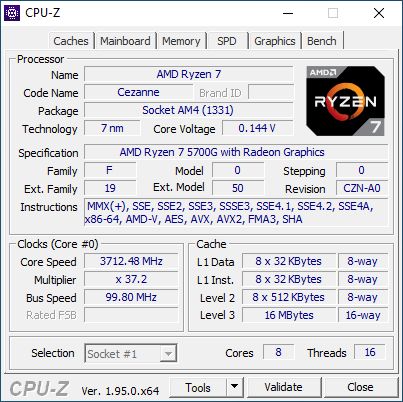

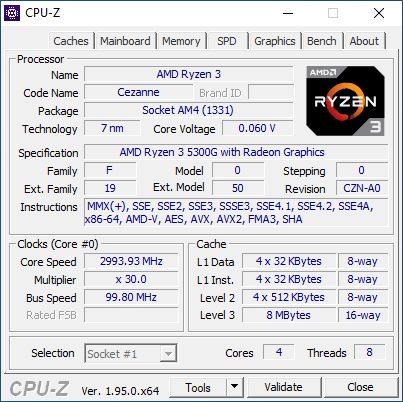
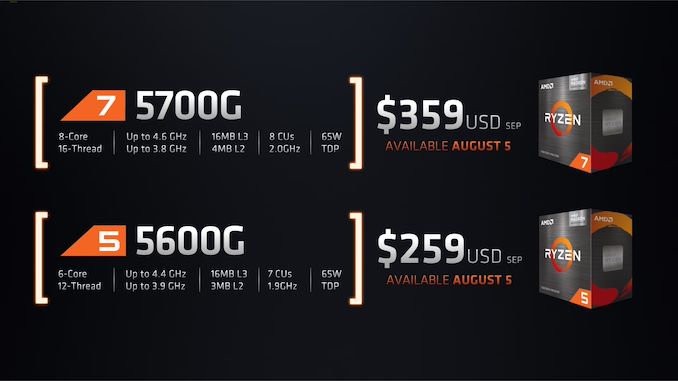
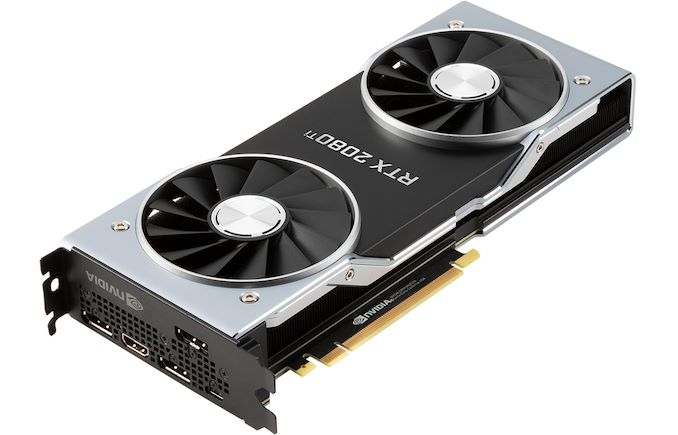
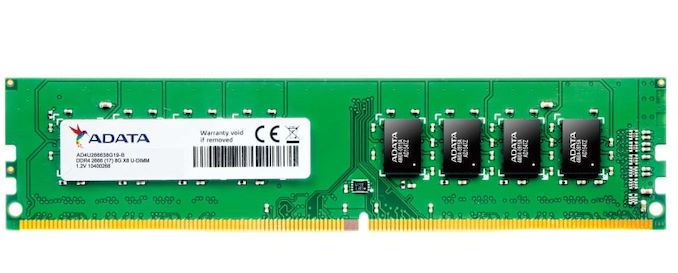








135 Comments
View All Comments
abufrejoval - Thursday, August 5, 2021 - link
There are indeed so many variables and at least as many shortages these days. And it's becoming a playground for speculators, who are just looking for such fragilities in the suppy chain to extort money.I remember some Kaveri type chips being sold by AMD, which had the GPU parts chopped off by virtue of being "borderline dies" on a round 300mm wafer. Eventually they also had enough of these chips with the CPU (and SoC) portion intact, to sell them as a "GPU-less APU".
Don't know if the general layout of the dies allows for such "halflings" on the left or right of a wafer...
mode_13h - Wednesday, August 4, 2021 - link
Ian, please publish the source of 3DPM, preferably to github, gitlab, etc.mode_13h - Wednesday, August 4, 2021 - link
For me, the fact that 5600X always beats 5600G is proof that the non-APUs' lack of an on-die memory controller is no real deficiency (nor is the fact that the I/O die is fabbed on an older process node).GeoffreyA - Thursday, August 5, 2021 - link
The 5600X's bigger cache and boost could be helping it in that regard. But, yes, I don't think the on-die memory controller makes that much of a difference compared to the on-package one.mode_13h - Friday, August 6, 2021 - link
I wrote that knowing about the cache difference, but it's not going to help in all cases. If the on-die memory controller were a real benefit over having it on the I/O die, I'd expect to see at least a couple benchmarks where the 5600G outperformed the 5600X. However, they didn't switch places, even once!I know the 5600X has a higher boost clock, but they're both 65W and the G has a higher base frequency. So, even on well-threaded, non-graphical benchmarks, it's quite telling that the G can never pass the X.
GeoffreyA - Friday, August 6, 2021 - link
Remember how the Core 2 Duo left the Athlon 64 dead on the floor? And that was without an on-die MC.mode_13h - Saturday, August 7, 2021 - link
That's not relevant, since there were incredible differences in their uArch and fab nodes.In this case, we get to see Zen 3 cores on the same manufacturing process. So, it should be a very well-controlled comparison. Still not perfect, but about as close as we're going to get.
Also, the memory controller is in-package, in both cases. The main difference of concern is whether or not it's integrated into the 7 nm compute die.
GeoffreyA - Saturday, August 7, 2021 - link
In agreement with what you are saying, even in my first comment. I think Cezanne shows that having the memory controller on the package gets the critical gains (vs. the old northbridge), and going onto the main die doesn't add much more.As for K8 and Conroe, I always felt it was notable in that C2D was able to do such damage, even without an IMC. Back when K8 was the top dog, the tech press used to make a big deal about its IMC, as if there were no other improvements besides that.
mode_13h - Sunday, August 8, 2021 - link
One bad thing about moving it on-die is that this gave Intel an excuse to tie ECC memory support to the CPU, rather than just the motherboard. I had a regular Pentium 4 with ECC memory, and all it required was getting a motherboard that supported it.As I recall, the main reason Intel lagged in moving it on-die is that they were still flirting with RAMBUS, which eventually went pretty much nowhere. At work, we built one dual-CPU machine that required RAMBUS memory, but that was about the only time I touched the stuff.
As for the benefits of moving it on-die, it was seen as one of the reasons Opteron was able to pull ahead of Pentium 4. Then, when Nehalem eventually did it, it was seen as one of the reasons for its dominance over Core 2.
GeoffreyA - Sunday, August 8, 2021 - link
Intel has a fondness for technologies that go nowhere. RAMBUS was supposed to unlock the true power of the Pentium 4, whatever that meant. Well, the Willamette I used for a decade had plain SDRAM, not even DDR. But that was a downgrade, after my Athlon 64 3000+ gave up the ghost (cheapline PSU). That was DDR400. Incidentally, when the problems began, they were RAM related. Oh, those beeps!